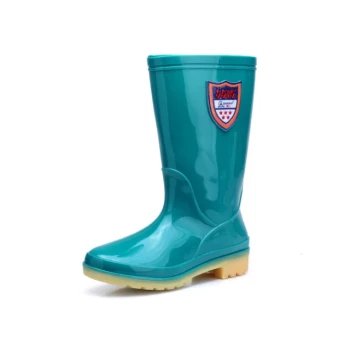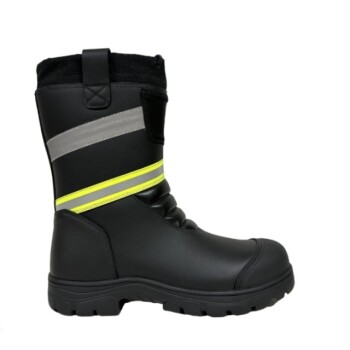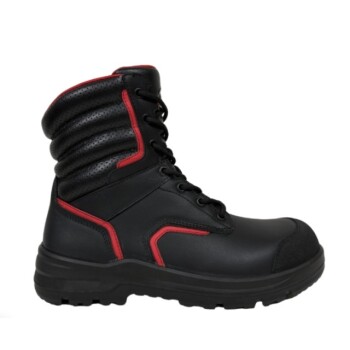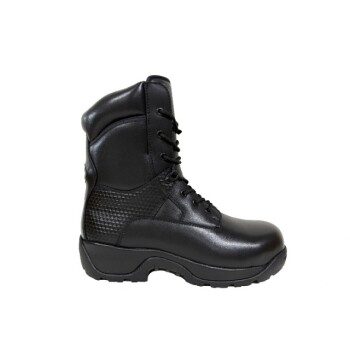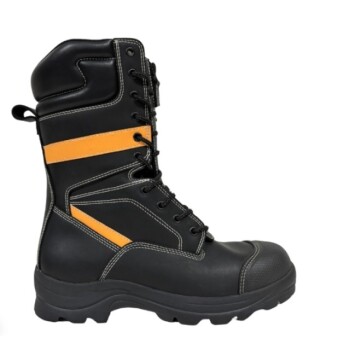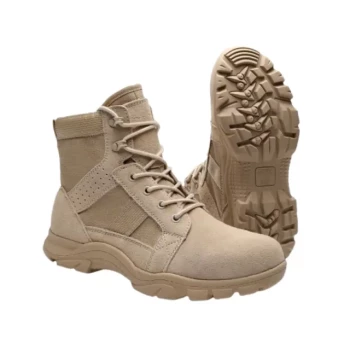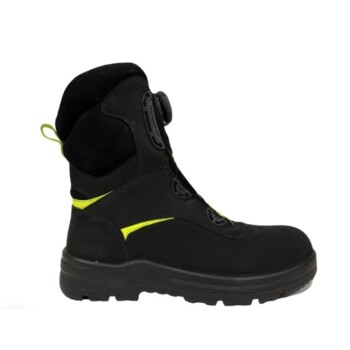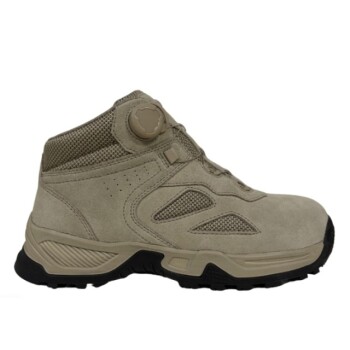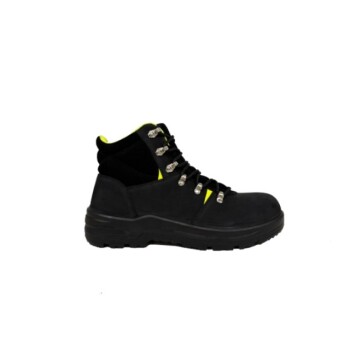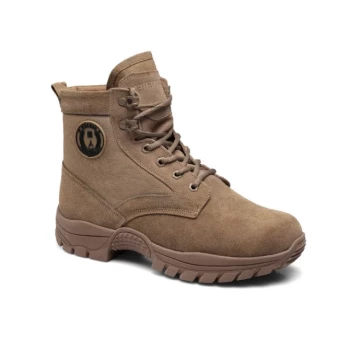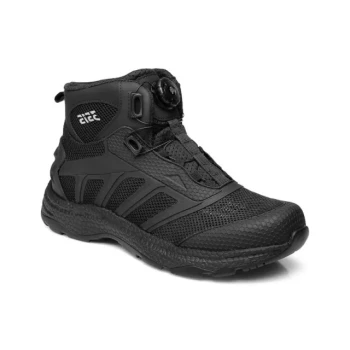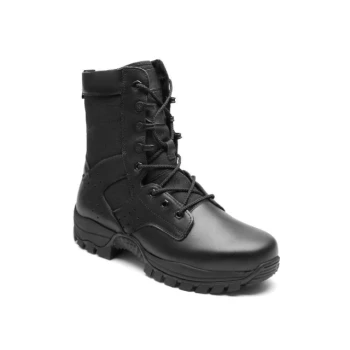At a fundamental level, the difference between women's hiking boots and regular boots is one of purpose. Hiking boots are engineered performance tools designed specifically for the unpredictable demands of natural terrain. In contrast, regular boots are primarily fashion items, prioritizing style over the functional requirements of durability, traction, and support needed for hiking.
The core distinction is not about appearance, but about engineering and safety. A hiking boot is designed to protect your foot from the environment, while a regular fashion boot is designed to present a certain style within a predictable, controlled environment.
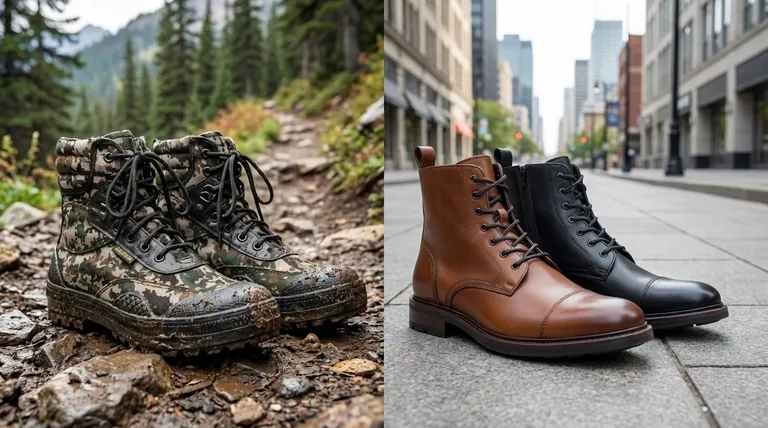
The Anatomy of a Purpose-Built Hiking Boot
To understand the difference, you must look at how a hiking boot is constructed from the ground up. Each component is a solution to a specific problem encountered on the trail.
The Foundation: Outsole and Traction
A hiking boot's most critical feature is its outsole, the part that contacts the ground. It is made of durable rubber compounds and features deep, aggressive patterns called lugs.
These lugs are designed to bite into varied surfaces like dirt, mud, and gravel, providing essential grip to prevent slips and falls. Regular fashion boots typically have smoother, shallower soles designed for flat, artificial surfaces like pavement, offering minimal traction on a trail.
The Structure: Midsole and Support
Between the outsole and your foot lies the midsole, which provides cushioning and absorbs shock. More importantly, it gives the boot its structural rigidity.
Many hiking boots incorporate a stiff plate called a shank within the midsole. This shank protects your foot from sharp rocks underfoot and reduces foot fatigue on long treks by preventing the boot from flexing too much. This level of underfoot protection and structural support is absent in fashion boots.
The Brace: Ankle Support
Hiking boots, particularly mid- and high-cut models, are built to provide significant ankle support. The rigid structure and secure lacing system lock your ankle in place.
This is a critical safety feature that helps prevent painful and debilitating ankle rolls on uneven or rocky terrain. Most regular boots offer little to no meaningful ankle support, as they are designed for walking on stable ground.
The Shield: Upper Materials
The uppers of hiking boots are made from materials chosen for durability and protection, such as full-grain leather, synthetics, and often a waterproof-breathable membrane (like GORE-TEX).
These materials are designed to resist abrasion from rocks and branches while keeping your feet dry from external moisture like rain or creek crossings. Fashion boots often use softer, less durable materials that can be easily damaged and offer no reliable weather protection.
Understanding the Trade-offs
Choosing the right boot means acknowledging that specialized tools come with specific limitations. There is no single boot that is perfect for every situation.
Why Not Wear Hiking Boots Casually?
While functional, hiking boots have clear downsides for everyday urban use. They are typically heavier, stiffer, and less breathable than regular boots or shoes.
Their aggressive outsoles can also wear down prematurely on hard, flat surfaces like concrete. For daily wear, their rugged features become a liability, leading to clunkiness and discomfort.
The Risk of Hiking in Regular Boots
Using fashion boots for any serious hiking is a significant risk. The lack of traction dramatically increases the chance of slipping, especially on inclines or wet surfaces.
Furthermore, the absence of proper ankle support and underfoot protection leaves you vulnerable to twisted ankles, stone bruises, and severe foot fatigue. While it might be possible for a short, flat walk on a perfect day, it is unsafe for any genuine trail.
Making the Right Choice for Your Activity
Your choice of footwear should always be dictated by the demands of your environment, not by aesthetics alone.
- If your primary focus is trail hiking or backpacking: A dedicated hiking boot is non-negotiable for safety, support, and performance on uneven terrain.
- If your primary focus is urban walking or casual style: A regular boot offers far greater comfort, flexibility, and aesthetic versatility for predictable, flat surfaces.
- If you need a hybrid for very light trails and city use: Consider a "hiking shoe" or a trail runner, which bridges the gap by offering trail-rated traction in a more lightweight and flexible package.
Ultimately, investing in the correct footwear is an investment in your own safety and enjoyment, whether you are on the trail or on the street.
Summary Table:
| Feature | Hiking Boots | Regular Boots |
|---|---|---|
| Primary Purpose | Performance & Safety on Trails | Fashion & Urban Style |
| Traction (Outsole) | Deep, aggressive lugs for grip | Smooth, shallow soles for pavement |
| Ankle Support | High, rigid support for stability | Minimal to no support |
| Protection (Upper) | Durable, waterproof materials | Softer, less durable materials |
| Best For | Hiking, Backpacking, Uneven Terrain | Casual Wear, City Walking |
Need Durable, High-Performance Hiking Boots for Your Customers?
As a large-scale manufacturer, 3515 produces a comprehensive range of footwear for distributors, brand owners, and bulk clients. Our production capabilities encompass all types of shoes and boots, including purpose-built hiking boots designed with the superior traction, ankle support, and durability detailed in this article.
We help you deliver the safety and performance your customers demand. Contact us today to discuss your production needs and bring high-quality footwear to your market.
Visual Guide
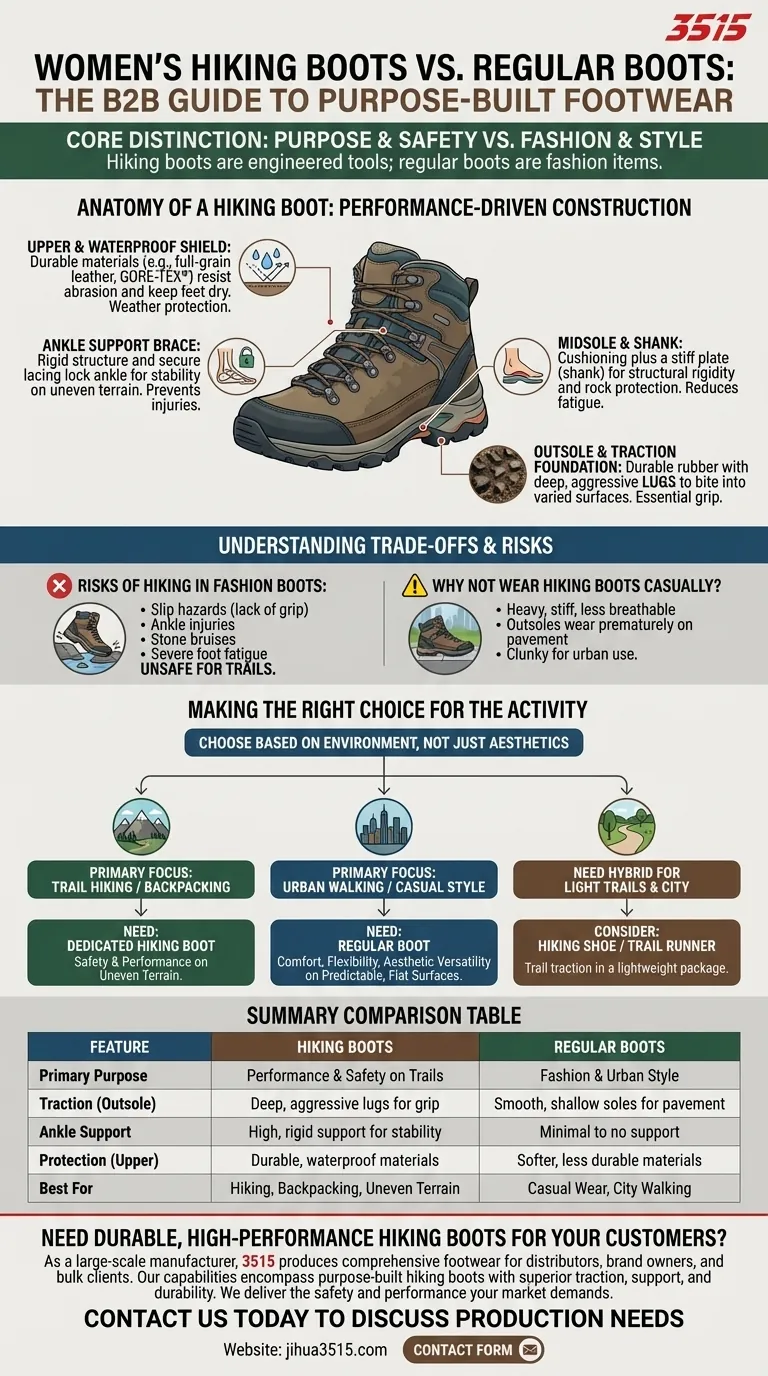
Related Products
- Wholesale High-Traction Camo Boots - Custom Manufacturer for Brands
- Factory-Direct Wholesale Canvas Boots with High-Traction Rubber Soles
- Safety Footwear Wholesale Manufacturer for Custom OEM/ODM Production
- Factory Direct Wholesale Rain Boots Durable Waterproof & Fully Customizable
- High Performance Fire-Retardant Waterproof Safety Boots
People Also Ask
- What are some real-world applications of military camouflage boots? From Tactical to Trendsetting
- How did camouflage use develop during the World Wars? From Artistic Disruption to Scientific Concealment
- What benefits do the men's camo boots provide? Superior Protection & Comfort for Demanding Terrain
- What historical event marked the first use of camouflage in military apparel? The Napoleonic Wars' Tactical Shift
- What technologies are used in the men's 8-inch camo lace-up boots? A Guide to Rugged Outdoor Performance



